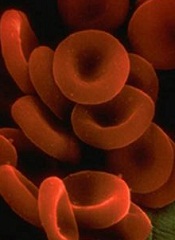
Researchers say they have used a rational design approach to create a safer variant of the drug erythropoietin (EPO).
This “targeted EPO” effectively stimulated red blood cell production in mice and had a minimal impact on platelets.
The team believes this approach could allow for the use of higher restorative doses of EPO without platelet-mediated side effects, and it might improve drug pharmacokinetics.
Devin Burrill, PhD, of the Wyss Institute for Biologically Inspired Engineering at Harvard University in Boston, Massachusetts, and his colleagues described the approach in PNAS.
The researchers noted that EPO has been widely used to treat anemia, but the drug also poses a risk of thrombotic complications. To combat this problem, the team set out to design a more effective, multi-part drug molecule.
“Compared to currently available EPO drugs, our molecule is engineered to prevent EPO from binding to and activating cells that promote side effects such as blood clotting or tumor growth,” said Jeffrey Way, PhD, also of the Wyss Institute.
“This cell-targeted EPO approach demonstrates a new theoretical basis for the rational design of engineered protein fusion drugs.”
To create their drug, the researchers first mutated EPO to reduce its ability to bind to EPO receptors.
Then, using a chain of amino acids as a flexible linker, they attached mutated EPO to an antibody fragment that specifically binds the human red blood cell marker glycophorin A (huGYPA). This antibody fragment binds to red blood cell precursors while avoiding other types of blood cells.
When the team’s fusion protein molecules were delivered to huGYPA transgenic mice, the antibody fragments piloted toward and bound to the membranes of red blood cell precursors, towing along EPO molecules on the other end of their linkers.
In such close proximity to the surface of the cells, a high concentration of tethered EPO bounced around until it ultimately toggled into place on the cells’ receptors. In this way, red blood cell production was increased with only minimal effects on platelets.
“Our rational design strategy is unique compared to current industry approaches,” Dr Burrill said. “Our goal is to use our method to advance predictive drug design and minimize the time between drug concept and commercialization.”
“The principles of synthetic biology influenced our efforts,” added James Collins, PhD, of the Wyss Institute.
“In drug development, the focus is typically on increasing the strength of interaction with a drug target, but, here, we found that weakening an interaction was useful. This illustrates how we need to adopt alternative, non-traditional approaches if we want to build complex, multi-part therapeutics.”
The researchers said this specific, cell-targeted approach could be applied quite broadly. In addition to “targeted EPO,” the team has developed “targeted interferon-alfa.”


